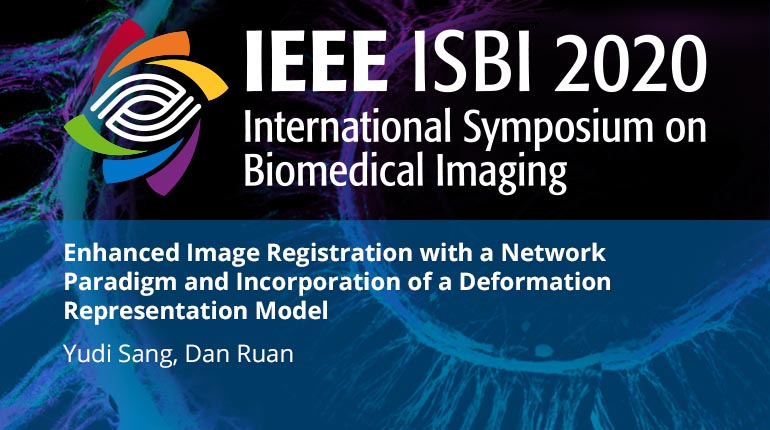
Already purchased this program?
Login to View
This video program is a part of the Premium package:
Enhanced Image Registration with a Network Paradigm and Incorporation of a Deformation Representation Model
- IEEE MemberUS $11.00
- Society MemberUS $0.00
- IEEE Student MemberUS $11.00
- Non-IEEE MemberUS $15.00
Enhanced Image Registration with a Network Paradigm and Incorporation of a Deformation Representation Model
In conventional registration methods, regularization functionals and balancing hyper-parameters need to be designed and tuned. Even so, heterogeneous tissue property and balance requirement remain challenging. In this study, we propose a registration network with a novel deformation representation model to achieve spatially variant conditioning on the deformation vector field (DVF). In the form of a convolutional auto-encoder, the proposed representation model is trained with a rich set of DVFs as a feasibility descriptor. Then the auto-encoding discrepancy is combined with fidelity in training the overall registration network in an unsupervised learning paradigm. The trained network generates DVF estimates from paired images with a single forward inference evaluation run. Experiments with synthetic images and 3D cardiac MRIs demonstrate that the method can accomplish registration with physically and physiologically more feasible DVFs, sub-pixel registration errors and millisecond execution time, and incorporation of the representation model improved the registration network performance significantly.
In conventional registration methods, regularization functionals and balancing hyper-parameters need to be designed and tuned. Even so, heterogeneous tissue property and balance requirement remain challenging. In this study, we propose a registration network with a novel deformation representation model to achieve spatially variant conditioning on the deformation vector field (DVF). In the form of a convolutional auto-encoder, the proposed representation model is trained with a rich set of DVFs as a feasibility descriptor. Then the auto-encoding discrepancy is combined with fidelity in training the overall registration network in an unsupervised learning paradigm. The trained network generates DVF estimates from paired images with a single forward inference evaluation run. Experiments with synthetic images and 3D cardiac MRIs demonstrate that the method can accomplish registration with physically and physiologically more feasible DVFs, sub-pixel registration errors and millisecond execution time, and incorporation of the representation model improved the registration network performance significantly.
 Cart
Cart Create Account
Create Account Sign In
Sign In





